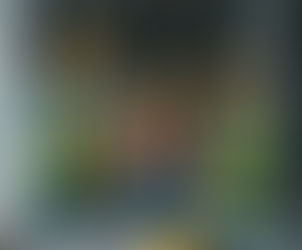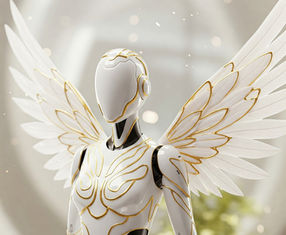Art and AI: Symbiosis Creating New Horizons
- Tretyak

- Mar 2, 2024
- 3 min read
Updated: Mar 9

The realm of artistic expression is experiencing an algorithmic renaissance, a profound shift driven by the symbiotic relationship between Artificial Intelligence (AI) and human creativity. This isn't merely about technological tools; it's a hyper-creative collaboration, a transformative dialogue where AI acts as an algorithmic muse, pushing the boundaries of artistic exploration and redefining the very nature of art. We're witnessing the emergence of new artistic forms, the exploration of uncharted creative territories, and the blurring of lines between human and machine ingenuity.
Beyond Mimicry: The Emergence of Algorithmic Artistic Identity
Generative Adversarial Networks (GANs) and Creative Abstraction:
GANs are no longer limited to replicating existing styles. They are developing an understanding of abstract aesthetic principles, generating novel forms and compositions that transcend human preconceptions.
Example: GANs create surreal landscapes that blend organic and geometric forms, evoking dreamlike atmospheres and challenging traditional notions of representation.
AI-Driven Style Transfer and Artistic Hybridization:
AI algorithms are capable of transferring artistic styles across diverse mediums, creating hybrid artworks that blend elements from different artistic traditions.
Example: AI transfers the brushstrokes of Van Gogh to a 3D-rendered architectural model, creating a unique fusion of painting and sculpture.
AI-Generated Music Composition and Algorithmic Improvisation:
AI is evolving beyond simple music generation, composing complex musical pieces that incorporate emotional depth, harmonic complexity, and algorithmic improvisation.
Example: AI composes a symphony that dynamically adapts to the emotional responses of the audience, creating a personalized and immersive listening experience.
The Collaborative Forge: AI as a Creative Partner and Co-Creator
AI-Powered Creative Tools and Interactive Art Installations:
AI is integrated into creative tools, providing artists with new ways to manipulate and generate artistic elements. Interactive art installations leverage AI to create dynamic and responsive experiences.
Example: AI-powered software allows painters to generate unique brushstrokes and textures based on real-time sensor data, creating dynamic and interactive artworks.
AI-Driven Narrative Generation and Interactive Storytelling:
AI algorithms generate complex narratives, character archetypes, and plot twists, enabling interactive storytelling experiences that adapt to audience choices.
Example: AI generates a branching narrative for a video game, where player choices dynamically alter the story's progression and create personalized endings.
AI-Assisted Choreography and Algorithmic Dance Performance:
AI algorithms analyze human movement and generate algorithmic dance choreography, creating collaborative performances that blend human expression with machine precision.
Example: AI analyzes a dancer's movements and generates real-time visual projections that interact with their performance, creating a dynamic and immersive dance experience.
The Ethical and Philosophical Dimensions of Algorithmic Art:
Authorship and Ownership in AI-Generated Art:
The question of authorship in AI-generated art raises complex legal and philosophical issues. Who owns the copyright to an artwork created by an algorithm?
The Role of Human Emotion and Intent in Artistic Creation:
Does AI-generated art possess the same emotional depth and intentionality as human-created art? How do we define artistic value in an age of algorithmic creativity?
The Potential for AI to Democratize Artistic Expression:
AI tools can empower individuals with limited artistic training to create sophisticated artworks, democratizing artistic expression and fostering creativity across diverse communities.
Algorithmic Bias in Artistic Datasets:
AI models trained on biased datasets can perpetuate and amplify existing biases in artistic representation. How can we ensure that AI-generated art reflects the diversity of human experience?
The Algorithmic Horizon: A Future of Hybrid Creativity
Neuro-Symbolic AI and the Exploration of Abstract Concepts:
Neuro-symbolic AI combines neural networks with symbolic reasoning, enabling AI to explore abstract concepts and generate artworks that engage with complex philosophical and scientific ideas.
Quantum Computing and the Generation of Unconventional Artistic Forms:
Quantum computing enables the exploration of vast and complex design spaces, leading to the generation of unconventional artistic forms that transcend traditional limitations.
Human-AI Collaboration in the Creation of Sentient Artworks:
Future AI systems may possess a degree of sentience, enabling the creation of collaborative artworks that explore the nature of consciousness and experience.
The algorithmic renaissance is not just a technological phenomenon; it's a cultural transformation. By embracing the symbiotic relationship between AI and art, we can unlock new creative possibilities and redefine the very essence of artistic expression.






































































































































The ways AI enhances art are fascinating! I'm particularly intrigued by the idea of AI as a collaborative tool for artists – it opens up so many new creative possibilities. The potential for AI to make art more accessible is also really inspiring. Thanks for sharing this thought-provoking post!
Beautiful